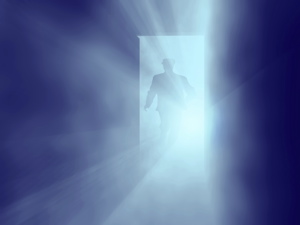A magazine where the digital world meets the real world.
On the web
- Home
- Browse by date
- Browse by topic
- Enter the maze
- Follow our blog
- Follow us on Twitter
- Resources for teachers
- Subscribe
In print
What is cs4fn?
- About us
- Contact us
- Partners
- Privacy and cookies
- Copyright and contributions
- Links to other fun sites
- Complete our questionnaire, give us feedback
Search:
Let's get out of here!

In today's very uncertain world being able to see into the future would be a very useful thing to do. Computer Science can help us to that, well a bit of it at least. From the sun powered astronomical calculations on Stonehenge telling the ancient people when to plant their crops, to today's stock market financial models charting the rise and fall of frozen orange juice concentrate on the markets, being able to predict the future using information from the present is big business.
Where one person can make a difference
Predicting is always challenging, but predicting how people will respond is harder still, after all we are individuals. Though it's known that large numbers of people can tend to act as a group and general behaviours can be guessed, what happens when the actions of a small group of individuals can make all the difference? This is at the heart of work going on at the University of Greenwich where a group of mathematicians and computer scientists have been working on perhaps the ultimate scenario. A scenario where what you do can mean the difference between life and death. They have created one of the world's most complex computer models of how people evacuate buildings, boats and aeroplanes in emergencies.
Welcome to our (virtual and not very pleasant) world
The software allows designers to try out new layouts for buildings, position fire escape or stairwells, change the position of lifeboats on a ship, enlarge escape doors on a plane and then fill these virtual worlds with realistic groups of panic stricken people, simulated smoke and faked flames to see what happens. The computer program uses clever mathematics to model the way that people interact with other people when they are fleeing, the way people interact (or don't) with fire and smoke, and also the way people interact with the structures in the building. Each of these different behaviours can be added together to produce very realistic, and potentially life saving, computer simulations. As well as the effects of fire the software can subject the poor virtual inhabitants to toxic gasses and the effects of smoke.
Understanding the mistakes in your building design or your aeroplane evacuation procedure where the only people that 'die' are computer simulations allows you to try again, and again, and again, until you discover the best level of safety possible.
See what I mean?
The inhabitants of these accident-prone worlds are programmed using information taken from safety procedures that are in place for evacuations, but also make use of detailed accounts of real accidents and how real people reacted. People often make decisions based on what they have been trained to do and what they can see at the time, so each of the virtual inhabitants has a realistic line of sight. The computer knows what the can and can't see. So if there are other people in the way or too much smoke they can't see what's happening at an exit in the distance. There is often confusion in these situations. People can't communicate clearly and so make mistakes. Again these behaviours can be included in the simulation by making a mathematical estimate of how real people responded.
Let's get out of here
When you run the aeroplane simulator, for example, you find passengers blinded by the smoke, some crawling under the smoke layer, others seat jumping, and some sadly succumbing to the toxic effects of smoke. When the simulator was run on some of the most infamous aircraft fires it gave similar results to the actual grizzly reality, including predicting the numbers of dead and also to some extent, the distribution of the bodies.
Safe in the knowledge
Understanding how to computer model this nasty past to help design a better safer future has earned the team at Greenwich a number of major Industry awards over the years. It's another example of how computer science and mathematics can make a real difference to the world around us, even if this time it's by simulating death and disaster.


